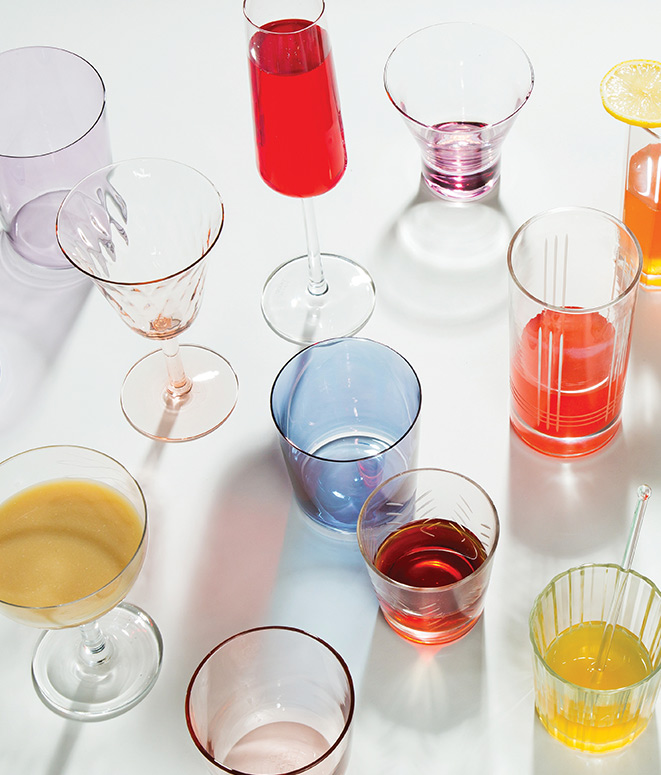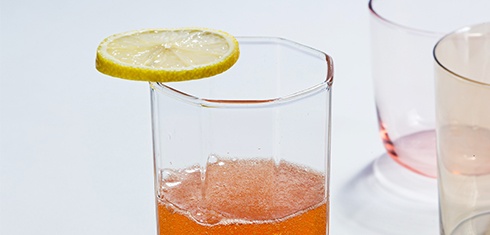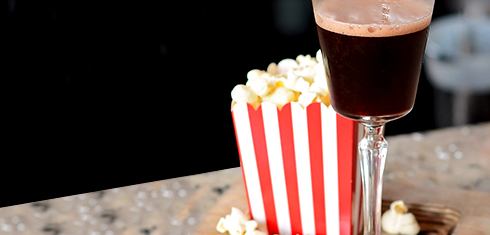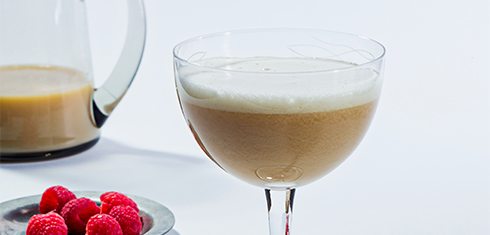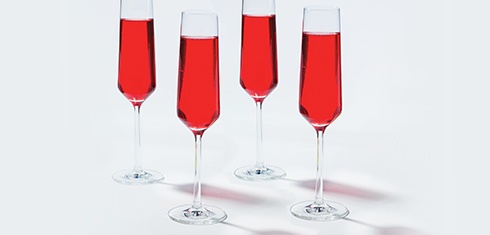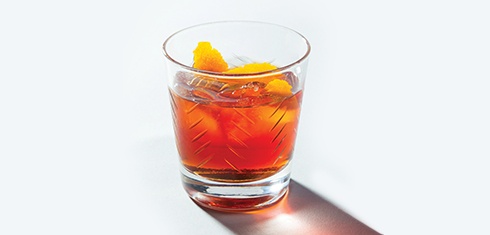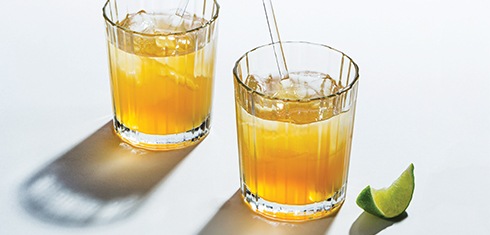By Kelly Magyrics
Around the country, skilled mixologists are turning on their immersion circulators in a quest for the perfect cocktail. Cooking sous vide intensifies flavors in a hurry, allowing spirits, syrups, and infusions to be layered into multi-faceted drinks that are ready fast—but taste like they were weeks in the making.
“Sous vide allows us to produce more infusions with a stronger flavor at a faster rate,” says Frank McGrath, general manager for San Diego’s Polite Provisions (4696 30th St.). Staff at the apothecary-like cocktail bar can sous vide multiple batches of ingredients each day, which then rest overnight before being strained. The technique is used in several current cocktails including the “Kentucky Buck,” for which bourbon and strawberries are cooked sous vide at 135°F (57°C) for two hours. After sitting overnight and being strained, the sous vide spirit is mixed with ginger syrup, lemon juice, and Angostura bitters and topped with seltzer.
A traditional infusion technique takes three days; with sous vide, it’s completed in half the time from bath to shaker—and beverage makers can maximize the amount of flavor they want pulled out of the other ingredients and into the booze. Most of Polite Provisions’ infusions use fruit or other bright flavors, but bartender and proprietor Erick Castro and staff also toy with fat washes (a method of infusing spirits with flavors of fats such as butter or sesame oil). The “Deconstructed Surfer on Acid,” a reimagined version of a ’90s-era shot, uses pineapple rum that’s been flavored via sous vide with coconut fat.
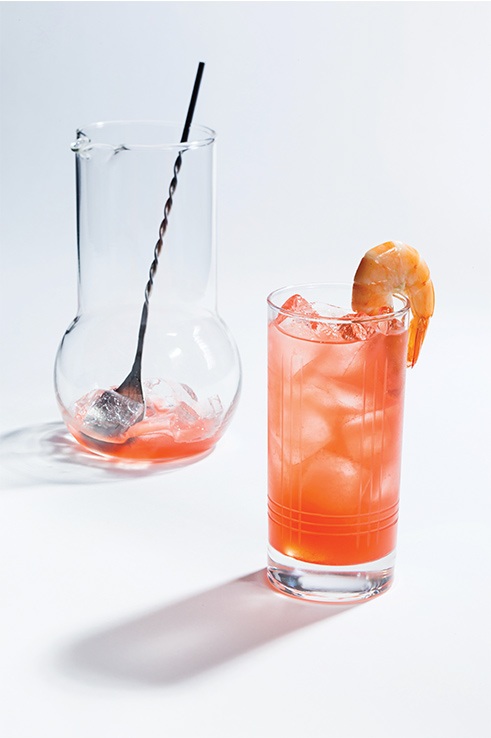
Bartenders at Dram & Grain (2007 18th St. NW), a speakeasy-style craft cocktail bar in Washington, DC, have been using sous vide for more than two years. For the drink “Shrimpwrecked on Grapefruit Island,” co-head bartender Andy Bixby cooks shrimp shells and butter sous vide at 190°F (88°C)
for three hours, then pours the butter into a bottle of Don Julio Blanco Tequila and fat-washes it the traditional way—by freezing and straining out the solids. The drink also contains grapefruit oleo saccharum, yuzu and lemon juices, miso paste, and Campari that’s cooked sous vide with kombu (sheets of sea kelp) for 30 minutes at 140°F (60°C).
While the process both speeds up infusion time and intensifies flavors, Bixby points out a limitation. “When you sous vide fresh fruit, you’re adding heat and essentially cooking it, changing its function [by] kickstarting those enzymatic functions and chemical interactions,” he says. Which means strawberries will take on a jammy taste, mint may become bitter, and stone fruits like pears and plums will be more densely flavored instead of acidic and bright.
That richer fruit flavor was just what Jason Miller was looking for in his cherry cola–like “Night at the Movies,” though. The co-owner at The Wine Kitchen (7 South King St.) in Leesburg, Virginia, cooks pitted cherries with spiced rum for four hours in a sous vide machine set at 135°F (57°C). The rum is mixed with spiced kola nut syrup and simple syrup, and the drink is carbonated. “Adding heat helps get a more complex flavor spectrum that we might not see with just putting cherries in a jar of vodka,” he says. Plus, the vacuum-sealed bag gives a controlled environment without any evaporation of alcohol.
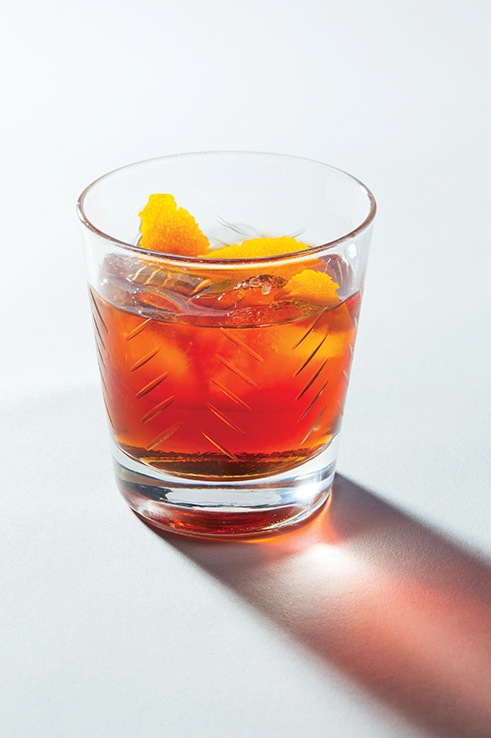
Chris Brown, beverage manager at Metropole (609 Walnut St.) at the 21c Museum Hotel in Cincinnati, likes the speed and consistency that sous vide cocktail components provide—and says the method is perfect for experimentation. “We can do test infusions and we’ll know within a couple hours if it’s tasty,” he says. “This decreases the amount of waste behind the bar.” He infuses plums with Pimm’s, thyme, and orange peel in a 140°F (60°C) water bath for an hour; in his drink “40-Love,” the plums are then mixed with aged rum, rye whiskey, and Dolin blanc. Brown has done rapid infusions of everything from orange Curaçao to allspice dram to pecan bitters—and even used it to simulate barrel aging.
Sous vide techniques fit right into the concept behind Double Chicken Please, set to open in New York in 2018 (and currently a traveling pop-up concept). Classic dishes and drinks are deconstructed and rebuilt: For his “French Toast Flip,” owner and creative director Gn Chan cooks pieces of burnt toast and maple syrup sous vide at 145°F (63°C) for 40 minutes, then adds coconut water and fine-strains the mixture.
The infusion is mixed with Aberfeldy 12-Year-Old Highland Single Malt Scotch Whisky, milk, egg, sea salt, and butter, then garnished with a whole dried walnut. For his “Red Eye Old Fashioned” (a take on red-eye gravy), he cooks unsalted butter and coffee beans sous vide for two hours at 194°F (90°C). It’s used to fat-wash a bottle of Dewar’s 12-Year-Old The Ancestor Blended Scotch Whisky, which is stirred with porcini mushroom brown sugar syrup and Toschi Nocello Walnut Liqueur, and garnished with prosciutto. “Sous vide is a great way to ensure that the ingredients and drinks stay consistent, and sometimes helps keep mixed ingredients stabilized,” says Chan.
It’s time to take the plunge. Those rocks glasses are waiting.
Related RecipesALL COCKTAILS & DRINKS
Kentucky Buck
 Beginner
BeginnerBright summer flavors like lemon, ginger, and strawberry come together in this sous vide bourbon cocktail from Polite Provisions, an apothecary-style cocktail bar in San Diego.
Night at the Movies
 Beginner
BeginnerThe Wine Kitchen in Leesburg, Virginia, does more than reds and whites. Its rum-based Night at the Movies with sous vide cherries and kola nut syrup tastes just like cherry cola.
French Toast Flip
 Intermediate
IntermediateNothing’s off limits for Gn Chan’s cocktails. The owner of Double Chicken Please sous vides toast and maple syrup for this rich Aberfeldy concoction.
More RecipesALL RECIPES
40-Love
 Beginner
BeginnerSous vide cocktails know no bounds. Chris Brown, of Cincinnati's Metropole, infuses plums with Pimm's, thyme, and orange peel for his inventive "40-Love."
Sous Vide Gin & Tonic
 Beginner
BeginnerRaise your glass to this sous vide spin on the refreshing cocktail classic.
Related Articles VIEW ALL ARTICLES
Dining
Memorial Day Menu Guide
Make the most of your Memorial Day—whether you're cooking for a crowd or keeping it low-key with a small group—by using sous vide to help with meal prep.
Read More >Dining
Summer Grilling 101
Cooking al fresco gets even tastier when you start with sous vide.
Read More >Dining
Dining in the District
Follow along as we dine and drink at the best sous vide spots in Washington, DC.
Read More >Buy the Magazine
Buy NowDedicated to the Art & Science of Sous Vide
The first publication devoted to the art and science of sous vide cooking, featuring innovative recipes, visual inspiration, expert techniques for cooking sous vide at home, and exclusive interviews with world-class chefs.
